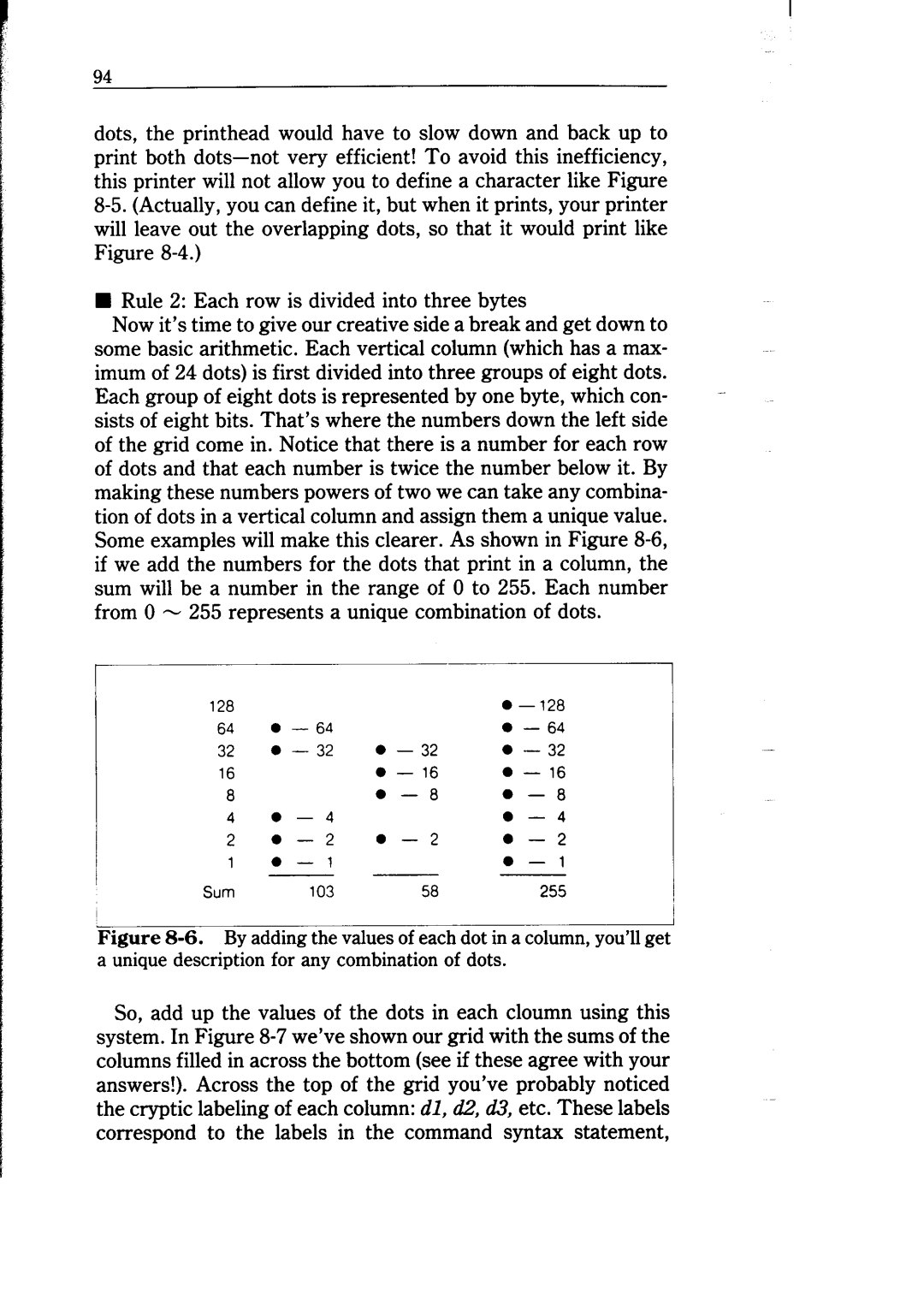
94
dots, the printhead would have to slow down and back up to
print both
nRule 2: Each row is divided into three bytes
Now it’s time to give our creative side a break and get down to some basic arithmetic. Each vertical column (which has a max- imum of 24 dots) is first divided into three groups of eight dots. Each group of eight dots is represented by one byte, which con- sists of eight bits. That’s where the numbers down the left side of the grid come in. Notice that there is a number for each row of dots and that each number is twice the number below it. By making these numbers powers of two we can take any combina- tion of dots in a vertical column and assign them a unique value. Some examples will make this clearer. As shown in Figure
128 |
|
|
|
|
|
|
| ||
64 | 0 | - | 64 |
|
|
| 0 | - | 64 |
32 | 0 | - | 32 | 0 | - | 32 | 0 | - | 32 |
16 |
|
|
| 0 | - | 16 | 0 | - | 16 |
8 |
|
|
|
|
| ||||
4 |
|
|
|
|
| ||||
2 |
|
| 0 | ||||||
1 |
| _____ |
|
| |||||
| - |
|
|
|
|
|
| ||
Sum |
|
| 103 |
|
| 58 |
|
| 255 |
Figure 8-6. Byaddingthevaluesofeachdotinacolumn,you’llget auniquedescriptionforanycombinationofdots.
So, add up the values of the dots in each cloumn using this system. In Figure
